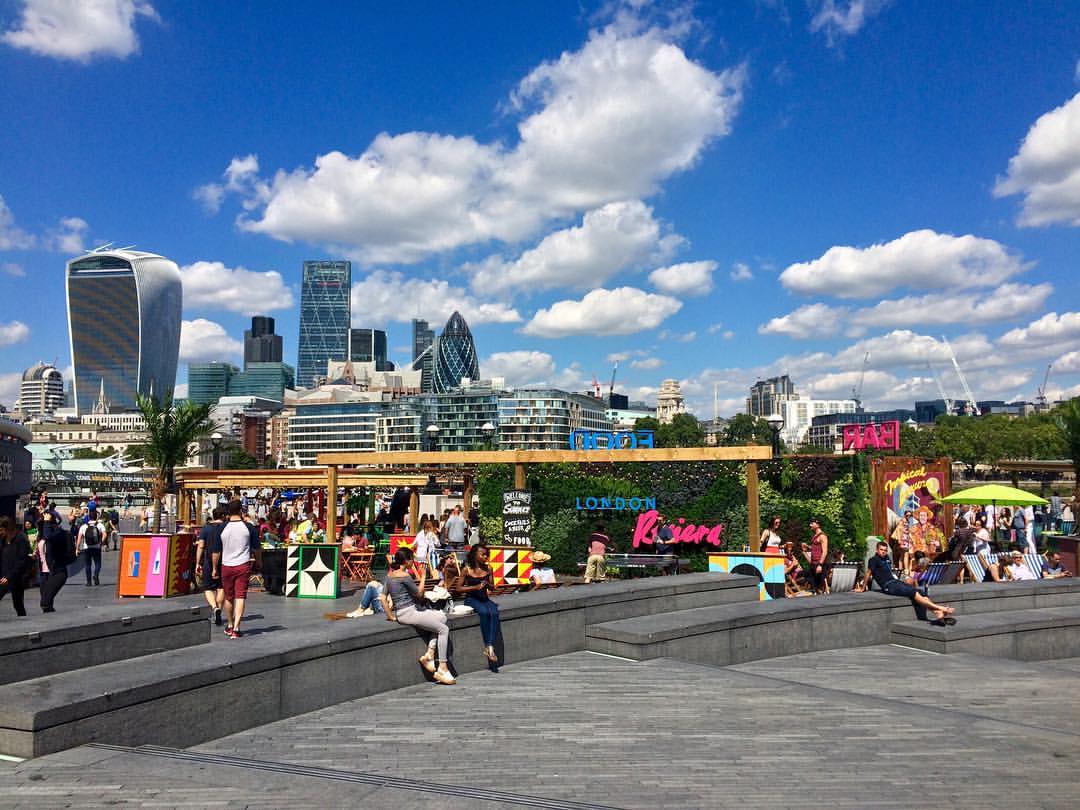
Uploaded on 2017-03-06 by Kiana Otsuka
1. Check the temperature differences in US cities I've checked the temperature differences for many of the US cities that I've visited. When I visit a particular city, I always try to go for a hike, as I enjoy the outdoors. This allows me to observe the differences in temperature and landscape between cities and their more rural landscapes. I could not, however, find reliable data on the urban heat island effect, in Honolulu, Hawaii, which is where I reside now. As such, I've decided to focus my discussion on London, United Kingdom, which is the last big city that I resided in. I've pulled the data and maps from the following sources: GLA (2006). London’s Urban Heat Island: A Summary for Decision Makers. Retrieved from https://www.puc.state.pa.us/electric/pdf/dsr/dsrwg_sub_ECA-London.pdf GLA (2011). London’s Response to Climate Change. Retrieved from https://www.london.gov.uk/what-we-do/planning/london-plan/current-london-plan/london-plan-chapter-five-londons-response/poli-8 LondUM (2011). Model data generated by Sylvia I. Bohnenstengel (*), Department of Meteorology, University of Reading and data retrieved from http://www.met.reading.ac.uk/~sws07sib/home/LondUM.html. 2. Which are the main UHI effects that you can identify in your area? The data provided by the London Datastore uses temperatures taken during the summer of 2011 because it was selected as a typical summer for a West-European city. On average, the night-time temperature in the city is approximately 4°C higher, than outside the city center, with larger effects observed on hotter nights (LondUM, 2011). Another report on the urban heat island effect looking at the summer of 2000 reported that the greatest values of the urban heat island intensity in London’s city centre were often reached between 11:00PM and 3:00AM, with the city centre reaching 6-8°C higher than its surrounding areas (GLA, 2006). The report also noted that urban heat island intensities are greater in the summer than the winter, and that this is reflected in how spring often occurs earlier in London, and the region experiences much less snow than other regions in the UK (ibid). During the particularly warm summer of 2003, the evening temperature differences between London and Wisley (rural reference site) reached 8-9°C (ibid). Though the study notes that the maximum daytime temperatures on many days in the city were below those in Wisley, potentially due to daytime shading effects and the storage of solar energy in the city’s building materials (ibid). The city centre’s temperature is quite a bit higher than areas slightly outside of it due to the significant reduction in green space in the city. This is due to the fact that construction materials have a different heat capacity, thermal conductivity, reflectivity and emissivity properties than surrounding rural areas. When green space is replaced by buildings and roads, more of the sun’s energy is absorbed and stored, which is reflected in higher temperatures in cities, such as London. Another factor that may contribute to London’s city centre’s higher temperatures is building heights and arrangements. Because taller building heights slow the rate of escape of the energy absorbed during the day, London’s city centre cools at a much slower rate than surrounding areas in the evening. 3. Which are the measures you would propose? If I could take part in the decision-making process to combat the urban heat island effect, I would propose the installation on existing buildings, or the building on (new buildings) cool roofs, green roofs and cool pavements. Cool roofs, which are made of materials that have high solar reflectance or albedo, will reflect and absorb less solar energy during the day, than conventionally made roofs (ibid). Green roofs, which are comprised of plants and other greenery planted over a waterproof membrane, also store and release less solar energy back into the atmosphere (ibid). Cool pavements, like cool roofs, implies using construction material that have high solar reflectance, as well as good permeability. Good permeability of a city’s streets will allow for greater water storage and thus, evaporative cooling. In addition, I would recommend the planting of more trees and vegetation. Trees and vegetation are natural cooling systems, due to their absorption of energy in the atmosphere (ibid). Further, in terms of urban planning and design, I would recommend there be greater openness between buildings (sky view factor). As is often found with narrow streets and tall buildings, and more generally a congested urban design, there is a slower rate of heat release in the evening. 4. Is UHI effect concerning policy making in your area? I am not entirely sure, the urban heat island is of particular concern to policy makers in London, based on the data and report availability on the topic. The most recent report I found done on the urban heat island effect from the government was published in 2006. This could reflect its temperate climate and the fact that it rarely gets really hot in the are, more generally. I did come across policy 5.9 on overheating and cooling, whereby the Mayor seeks to reduce the impact of the urban heat island through the design of places and spaces (GLA, 2011). The policy calls for major development proposals to reduce potential overheating and reliance on air conditioning through energy efficient design, orientation, shading, albedo, fenestration, insulation, green roofs, walls, exposed internal thermal mass and high ceilings, passive ventilation, mechanical ventilation and active cooling systems (ibid). However, I could not find any data/evidence reflecting the policies’ impact.